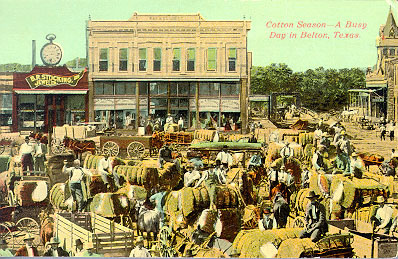| Overview | 1800 to Independence |
Independence & Early Statehood |
Civil War to World War II |
Modern Texas Economy |
|
"Mexican Colonization Laws." The Handbook of Texas Online. http://www.tsha.utexas.edu/handbook/online/articles/view/MM/ugm1.html.
"Census and Census Records." The Handbook of Texas Online. http://www.tsha.utexas.edu/handbook/online/articles/view/CC/ulc1.html.
"Anglo American Colonization." The Handbook of Texas Online. http://www.tsha.utexas.edu/handbook/online/articles/view/AA/uma1.html.
"Antebellum Texas." The Handbook of Texas Online. http://www.tsha.utexas.edu/handbook/online/articles/view/AA/npa1.html.
"Cotton Culture." The Handbook of Texas Online. http://www.tsha.utexas.edu/handbook/online/articles/view/CC/afc3.html.
The National Grange, http://www.nationalgrange.org/about/history.html.
"Grange." The Handbook of Texas Online. http://www.tsha.utexas.edu/handbook/online/articles/view/GG/aag1.html.
"Texas in the 1920s." The Handbook of Texas Online. http://www.tsha.utexas.edu/handbook/online/articles/view/TT/npt1.html.
"Cotton Season--A Busy Day in Belton, Texas." Undated, early 20th Century. Prints and Photographs Collection, Texas State Library and Archives Commission, #1963/127-1, http://www.tsl.state.tx.us/exhibits/suffrage/battle/cotton-belton.html, accessed July 29, 2006.
